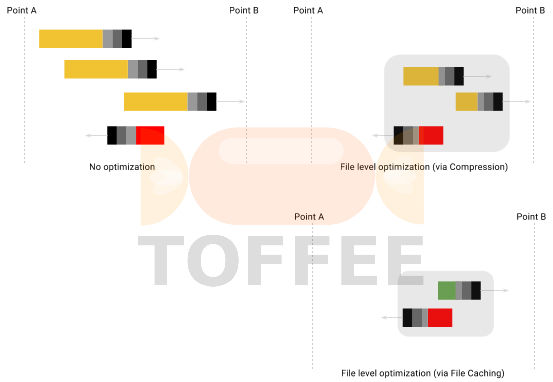RESEARCH 》 Grid Hosting vs CDN Hosting
These days web hosting firms are providing a new kind of service called Grid Hosting.
So, what is Grid Hosting? Grid hosting usually means that the web space you rent is not located on one (potentially shared) machine, but is more like a “virtual machine” which is hosted on a cluster of servers (which is a grid). So a service provided of this form is called Grid Hosting. Usually Grid Hosting may cost a little extra than the regular hosting service. Customers who already have regular hosting package can sometimes upgrade to grid hosting package(s), if your web hosting provider offers such services and a scheme for it.
While resources on a single machine are limited and might run out, especially if it’s a shared host and you have to share your resources (memory, bandwidth) with potentially hundreds or thousands of other users who are hosted on the same machine as you, grid hosting is more flexible, as your virtual website could leverage resources from more machines in the cluster if necessary. This of course also increases reliability of the website, as the failure of one grid node doesn’t matter, another server takes over, while the failure of your dedicated or shared host takes your website offline.
Web hosting firms refer single machine hosting commonly as website hosting.
Grid Hosting vs. CDN Services: Hence this is indeed similar to CDN Objectives and CDN like service. But the main difference is CDN vendors usually offer only CDN packages and application data acceleration services. In a way for SOHO and mid-level organizations may use Grid Hosting services, but still any large organization and or any website with huge amount of hits per second has to go for dedicated CDN Service. Sometimes it is also required for security purposes.
Also Grid Hosting will have limitations of number of nodes, unlike CDN. The advantage of CDN is all about how much shared/distributed and how big is its network. So for now when we assume CDN like service, it is far far much bigger and much wide spread network across Internet unlike Grid Hosting scenario. But as a cheap and temporary option, and also for very small websites if there is an option you can opt for Grid Hosting till the time you are not getting huge amount of load/hits to your website.
Suggested Topics:
Generic CDN
Building my own CDN
| 💎 TOFFEE-MOCHA new bootable ISO: | Download |
| 💎 TOFFEE Data-Center Big picture and Overview: | Download PDF |

Saturday' 13-Mar-2021

Saturday' 13-Mar-2021
Saturday' 13-Mar-2021
Saturday' 13-Mar-2021

Saturday' 13-Mar-2021

Saturday' 13-Mar-2021
Featured Educational Video:

Saturday' 13-Mar-2021

Saturday' 13-Mar-2021

Saturday' 13-Mar-2021
Research :: Optimization of network data (WAN Optimization) at various levels:

Learn Linux Systems Software and Kernel Programming:
![Linux, Kernel, Networking and Systems-Software online classes [CDN] Linux, Kernel, Networking and Systems-Software online classes [CDN]](http://sareesaremypassion.org/cdn/the-toffee-project/i/the_linux_channel_banner2.jpg)
Hardware Compression and Decompression Accelerator Cards:

TOFFEE-DataCenter on a Dell Server - Intel Xeon E5645 CPU:



